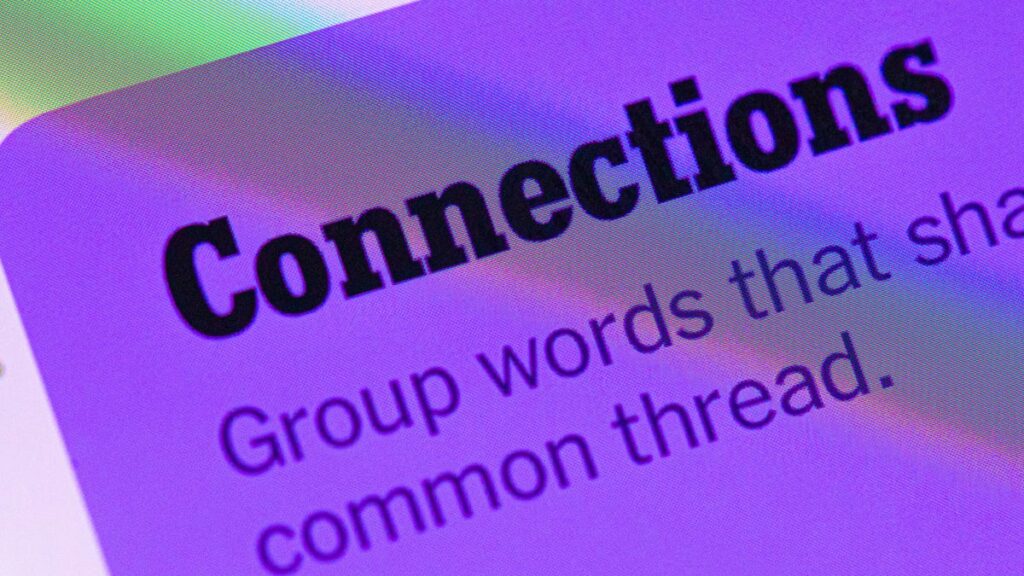
For puzzle enthusiasts, The New York Times Connections puzzle for August 12, 2025, offers a fresh challenge. As players eagerly anticipate the daily brain teasers, today’s puzzle, #793, is designed to intrigue and perplex with its clever word groupings. The puzzle draws players in with its seemingly straightforward clues, only to surprise them with unexpected connections.
Today’s puzzle features a unique twist with several bowling-related hints, prompting players to consider whether “bowling” might be a category. However, as seasoned players know, The New York Times puzzle editors are adept at leading participants down unexpected paths, often resulting in proverbial gutterballs.
Decoding Today’s Connections Puzzle
The introduction of the Connections Bot, similar to the Wordle Bot, allows players to analyze their performance post-game. Registered users can track their progress, including win rates and streaks, offering a deeper dive into their puzzle-solving prowess.
For those seeking a nudge in the right direction, here are today’s hints for the Connections groups:
- Yellow group hint: 7, 8, 9…
- Green group hint: Stay in your ____.
- Blue group hint: The Big Apple.
- Purple group hint: Bagels and doughnuts also have these.
Answers for Today’s Connections Groups
After much deliberation, here are the solutions to today’s puzzle:
- Yellow group: Groups of ten. The answers include bowling pins, commandments, decade, and fingers.
- Green group: Places with lanes. The answers are bowling alley, highway, supermarket, and swimming pool.
- Blue group: Landmarks in downtown NYC. The answers are Bowling Green, Brooklyn Bridge, City Hall, and Wall Street.
- Purple group: Things with holes. The answers are bowling ball, colander, golf course, and sponge.
Strategies for Mastering NYT Connections
For those looking to improve their puzzle-solving skills, consider these expert tips:
- Tip #1: Say the clue words out loud, pausing before and after each. This technique can help identify words used in similar phrases.
- Tip #2: Avoid the obvious groupings. The editors are known for their clever misdirection, as demonstrated in a past puzzle featuring SPONGE, BOB, SQUARE, and PANTS, none of which were in the same category.
- Tip #3: Break down compound words and search for similarities. For example, “Rushmore” once appeared in a puzzle where the connection was that each word started with the name of a rock band.
The Cultural Impact of Puzzle Games
Puzzle games like Connections have become a cultural phenomenon, offering not only entertainment but also cognitive benefits. According to cognitive psychologists, engaging in puzzles can enhance problem-solving skills and improve memory and concentration.
“Puzzles are a fantastic way to stimulate the brain. They encourage critical thinking and creativity, which are essential skills in today’s fast-paced world,” said Dr. Emily Carter, a cognitive psychologist at the University of New York.
As the popularity of puzzle games continues to grow, The New York Times’ Connections puzzle stands out for its innovative approach, challenging players to think outside the box and make unexpected connections.
With each day’s puzzle offering new challenges, players are not only entertained but also mentally invigorated, making Connections a staple in the daily routines of many puzzle aficionados.
Looking Ahead
As players eagerly await the next installment of the Connections puzzle, the anticipation builds for what clever twists and turns the editors will introduce next. Whether you’re a seasoned solver or a newcomer, the Connections puzzle promises to keep you engaged and thinking critically.
For more tips and strategies on mastering The New York Times Connections puzzle, be sure to stay tuned for daily updates and insights.






